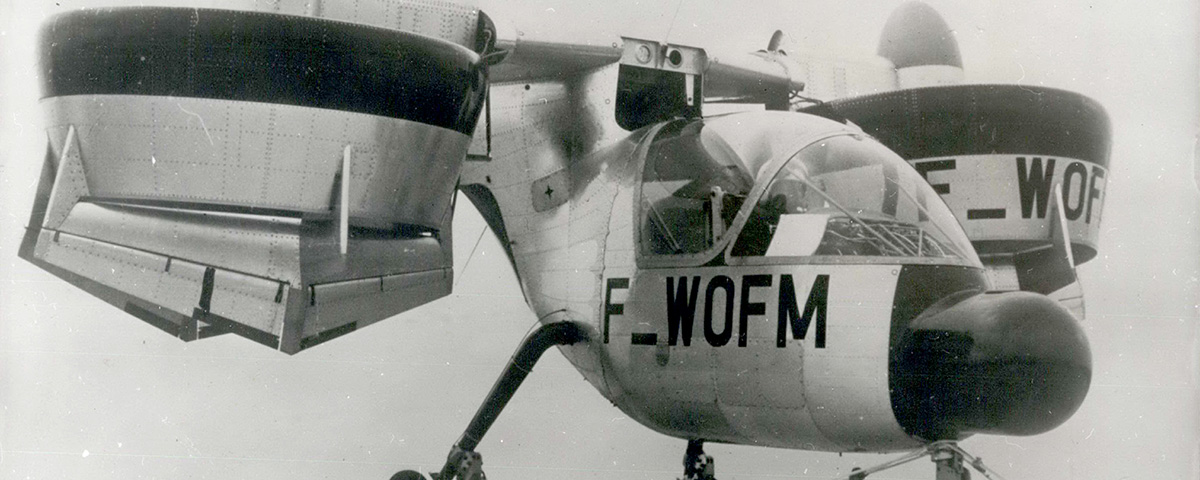Nord Aviation 500 Cadet
Amid a worldwide trend of experimentation with vertical takeoff and landing, in 1965 France’s Nord Aviation started work on a VTOL aircraft as a private venture to evaluate tilt-duct propulsion. It was still in the design stage when a model kit was introduced at the 1965 Paris Air Show at Le Bourget. The real thing was finally ready for static ground testing in the spring of 1967.
Called the Nord 500 Cadet, the aircraft had a wingspan of 20 feet 2 inches, was 21 feet 7 inches long and weighed 2,756 pounds. Two 316-hp Allison T63-A-5A turboshaft engines were installed side by side in the fuselage, each driving a three-blade ducted fan 4.9 feet in diameter, through the stubby wings. Four movable vanes, two mounted aft of each duct in a diamond-shaped pattern, controlled the duct positions automatically. Maximum level speed was projected at 218 mph.
The second prototype Cadet, civil registration F-WOFM, underwent a tethered hovering test on July 23, 1968. Video of the event shows the plane bucking like a bronco while the pilot seems to be learning how to control it as he goes. He would never get the change to figure things out, however.
In 1970 Nord merged with Aerospatiale Corporation, and although it considered continuing development of its ducted-fan configuration, its new bosses were not so inclined. By 1971 the Nord 500 Cadet was fini. Whether either prototype still exists is unknown, but there are still model kits available.

